Case 9
- Spanish Civil War
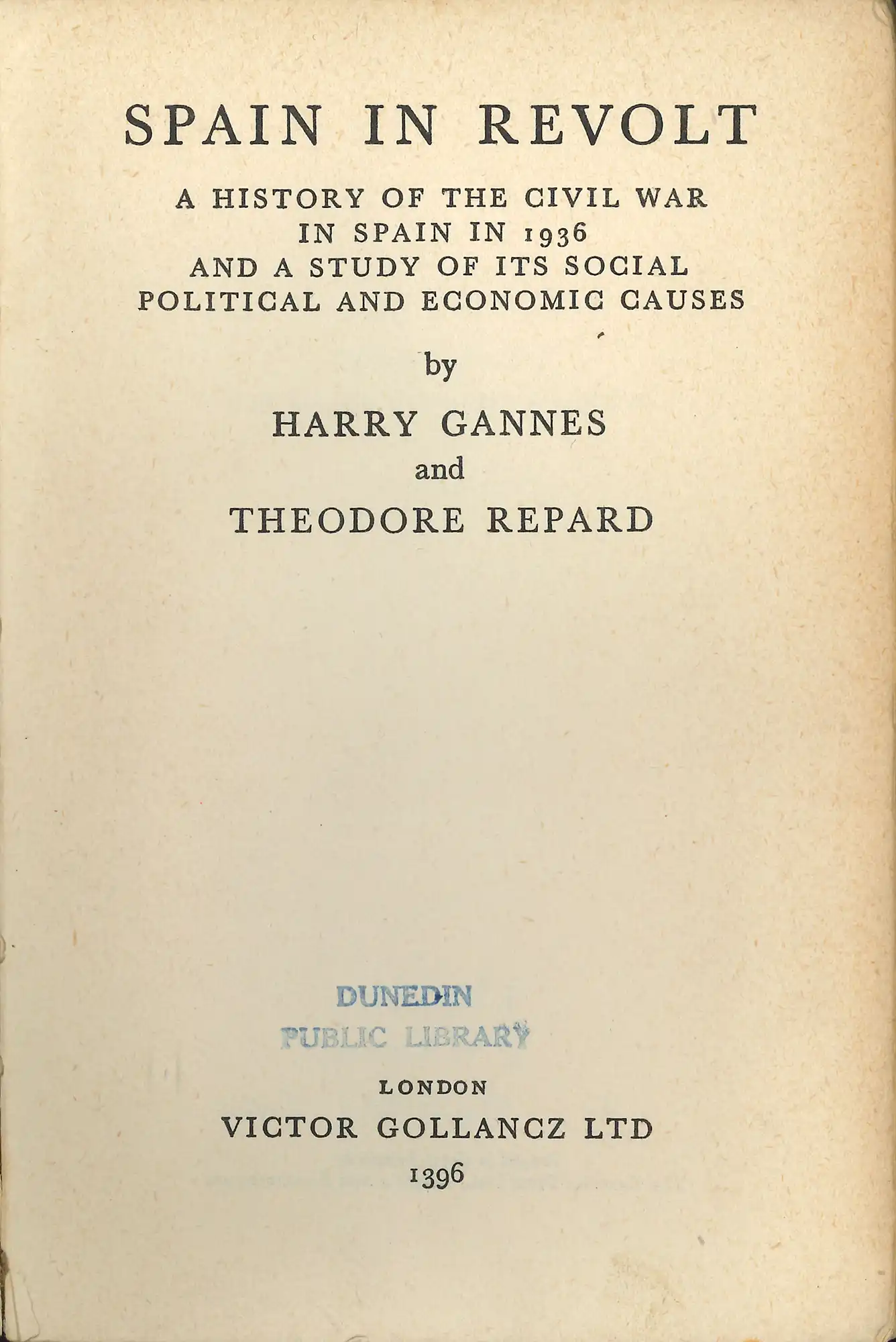
Harry Gannes and Theodore Repard, Spain in Revolt. (1936). LBC 946.081 GAN
Hull-born Harry Gannes (1900-1941), foreign editor of The Daily Worker, the newspaper of the Communist Party of the USA, along with Theodore Repard (actually Draper; 1912-2006) produced the Club’s first work on the Spanish conflict, Spain in Revolt. After World War II Draper became an academic historian and drifted towards liberalism. He produced one of the best histories of the early American communist movement, The Roots of American Communism (1957).
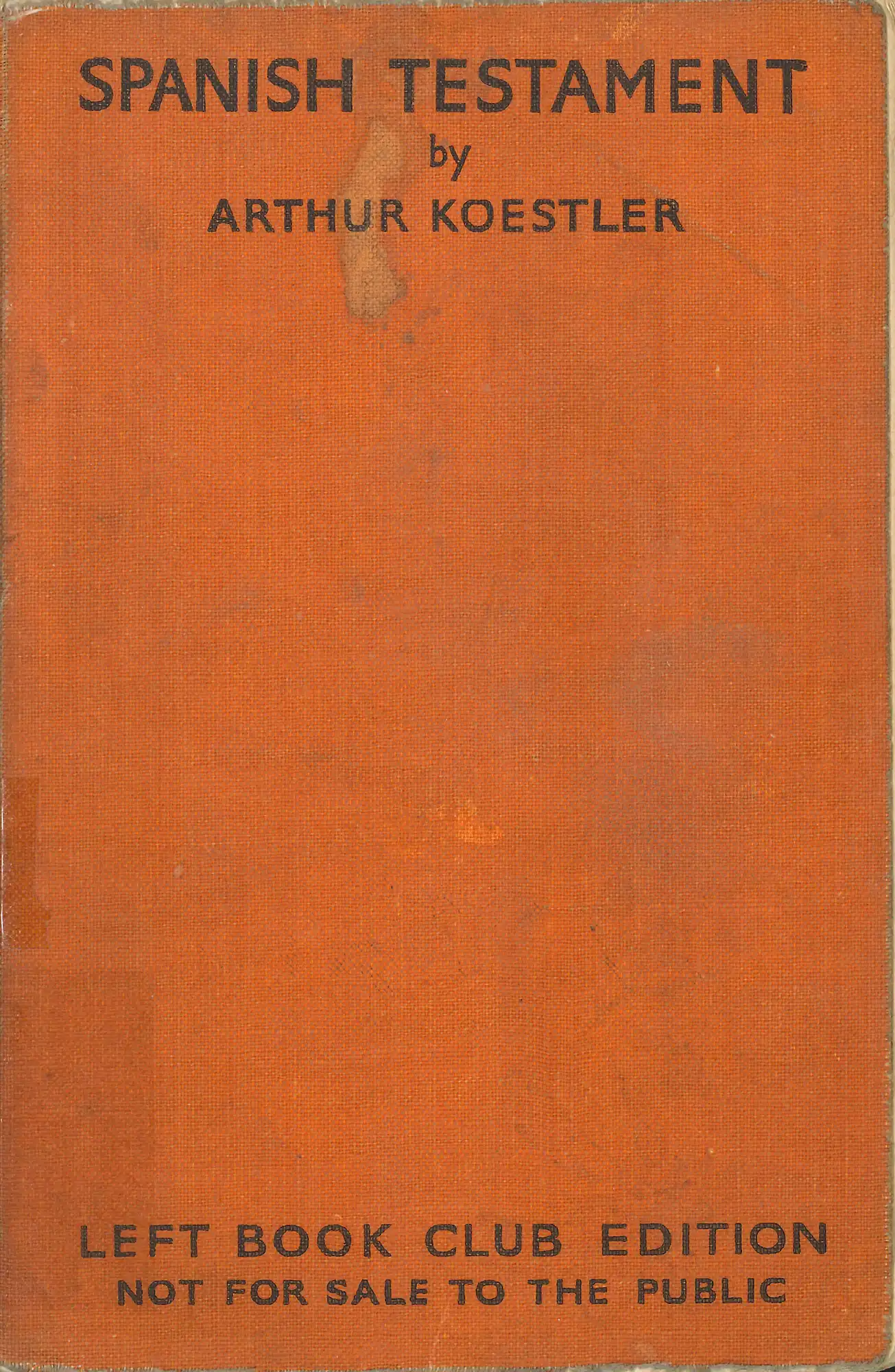
Arthur Koestler, Spanish Testament. (1937). LBC 946.081 KOE
Arthur Koestler (1905-1983) travelled to the Nationalist-controlled south of Spain in August 1936 to General Franco’s headquarters in Seville as a supposedly Franco-sympathising correspondent for the British newspaper, News Chronicle. As a member of the Kommunistische Partei Deutschlands (KPD), Koestler was really there to collect intelligence on Nazi Germany and Fascist Italy’s intervention in the conflict on Franco’s side. In short, he was an undercover agent for the Comintern (Communist International). He was recognised and had to flee Spain. On his return to the country, he was captured, imprisoned, and sentenced to death. He survived through the intensive lobbying of his estranged wife. Spanish Testament was the club choice for December 1937. A four-week lecture tour promoting the book led him to remark, ‘I came to the tentative conclusion that the majority of English Communists were not revolutionaries but cranks and eccentrics, and that they were certainly closer to the Pickwick Club than the Comintern.’ (Invisible Writing, 1969, p. 465)

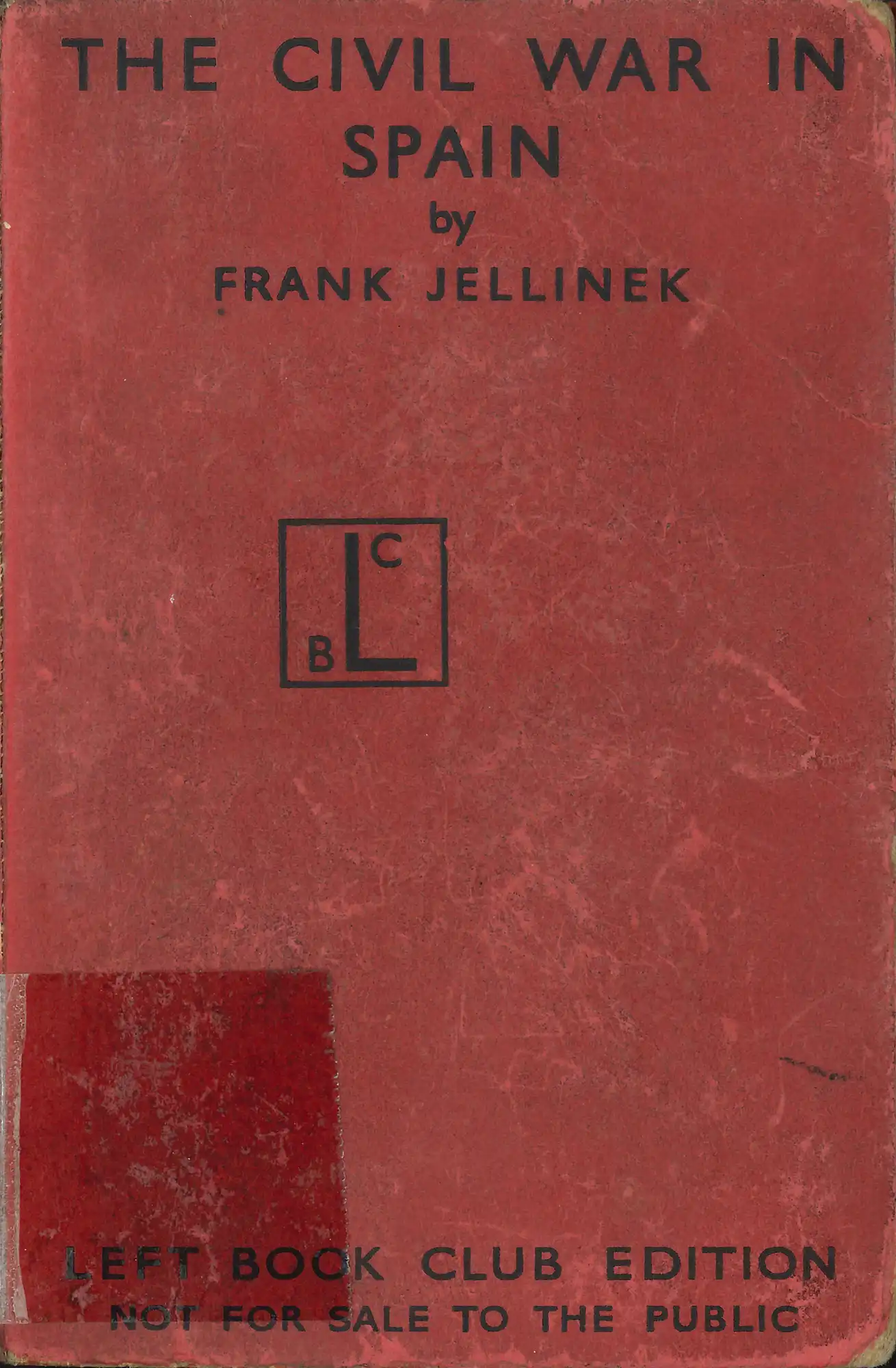
Frank Jellinek, The civil war in Spain. (1938). LBC 946.08 JEL
Journalist Frank Jellinek covered the war for the Manchester Guardian. His The Civil War in Spain was written between August 1936 and August 1937 and covers events up to the Barcelona ‘May Days’ when anarchists of the CNT-FAI (Confederación Nacional del Trabajo–Federación Anarquista Ibérica) and the dissident communists of the POUM (Partido Obrero de Unificación Marxista) fought with Republican government and Communist Party militia for control of the city in defence of the social revolution. Jellinek’s sympathies lay with the Stalinists, who were against the revolutionary collectivisation and socialisation of agriculture and industry. He wrote: ‘the truth was [the POUM] was objectively helping Trotskyism – and, by extension, Fascism’. Members of the POUM, most famously Andreu Nin, were smeared as fascist agents by the NKVD, the Soviet secret police, and ‘disappeared’.
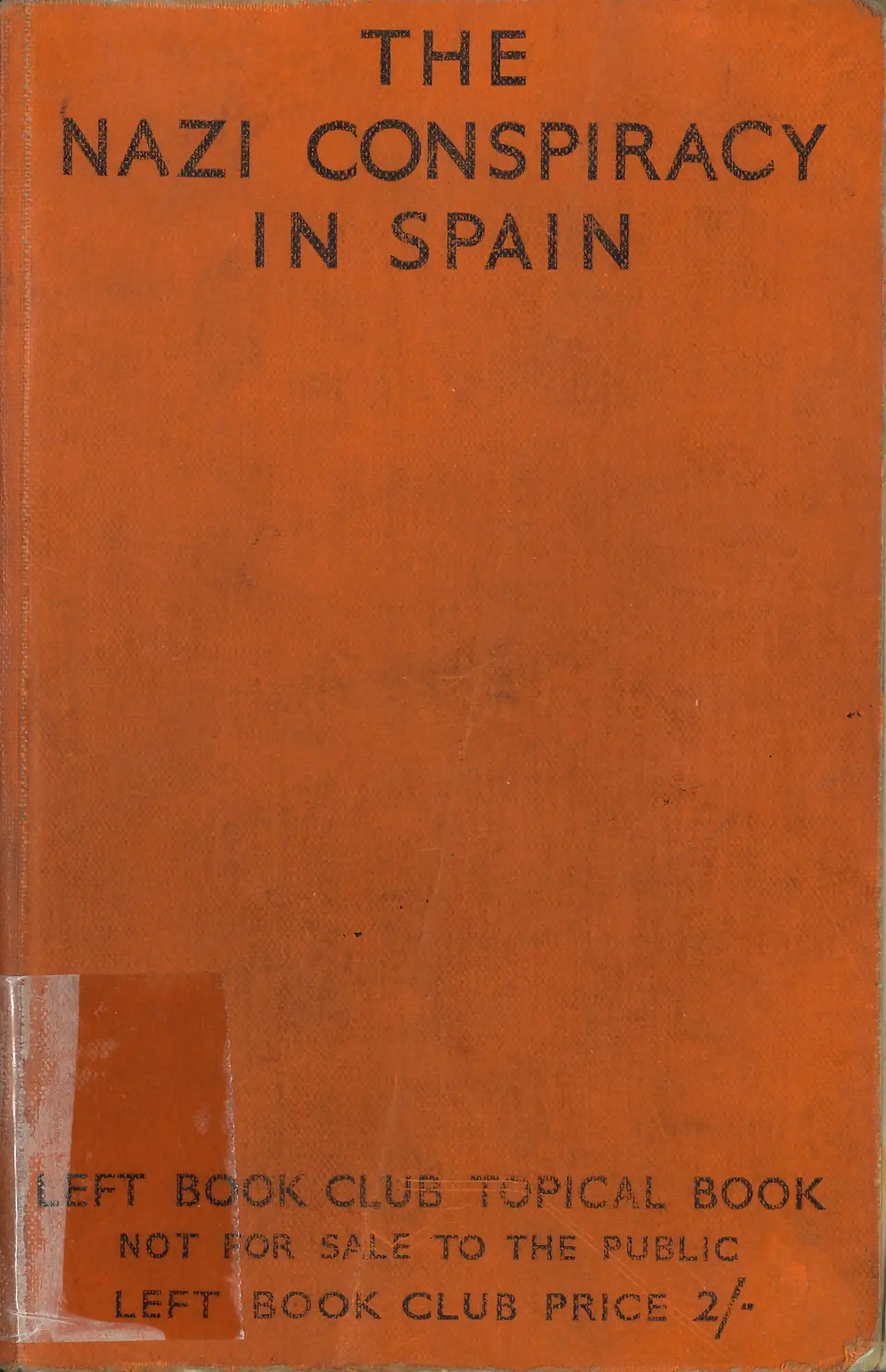
Otto Katz, The Nazi conspiracy in Spain. Translated by Emile Burns. (1937). LBC 327.43 SIM
Like Koestler, Czech communist Otto Katz (aka André Simone; 1895-1952) was a Comintern agent, working under the control of Willi Münzenberg. In 1933 he was instrumental in producing the bestselling Brown Book of the Hitler Terror, a work of propaganda that pinned the Reichstag fire on the Nazis themselves but also systematically exposed the nature of the Nazi regime. Gollancz published Brown Book in Britain in September 1933. Katz was sent to Spain in mid-1936, where he was involved in a break-in of an undercover Nazi headquarters in Barcelona. Discovery of a trove of documents outlining Nazi plans to support General Franco’s revolt helped form the basis for The Nazi Conspiracy in Spain. It was the first in the LBC’s series of Topical books. Katz is believed to have been involved in the killing of Münzenberg, whom he had been spying on for the Kremlin. Katz was a victim himself of the Stalinist regime, executed after the Slánský show trials in Czechoslovakia.
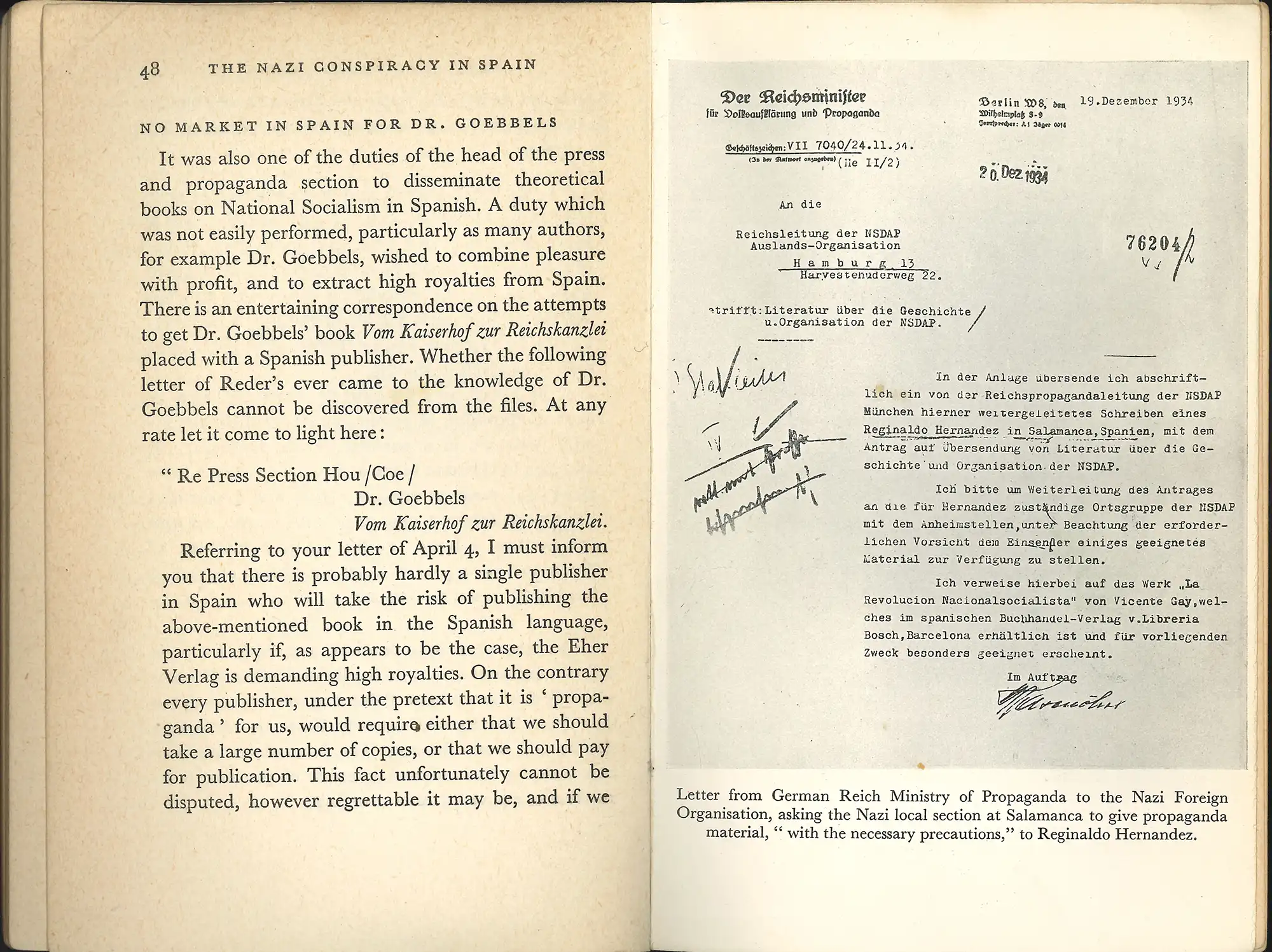
Otto Katz, The Nazi conspiracy in Spain. Translated by Emile Burns. (1937). LBC 327.43 SIM
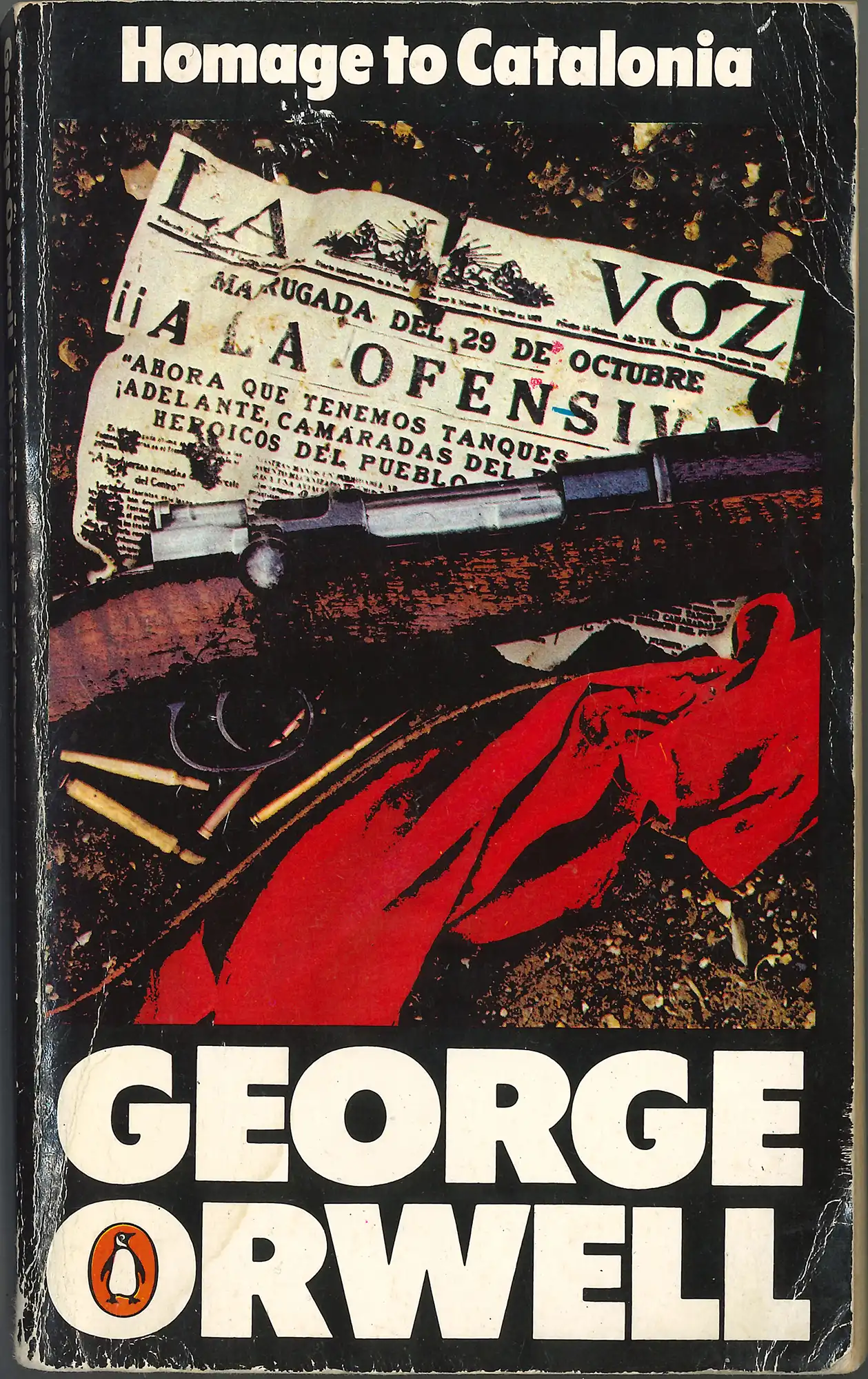
George Orwell, Homage to Catalonia. London: Penguin, 1982. Private Collection.
‘Gollancz is part of the Communism-racket, and as soon as he heard I had been associated with the POUM and Anarchists and had seen the inside of the May riots in Barcelona, he said he did not think he would be able to publish my book, though not a word of it was written yet.’ (A Life in Letters, 2011, p. 81) – so wrote Orwell to his friend Rayner Heppenstall in July 1937 about Homage to Catalonia, Orwell’s famous account of his experience fighting with the POUM militia, from December 1936 until the POUM was suppressed by Communist/government forces in June 1937. Gollancz did indeed refuse to publish Homage. It was published by Secker & Warburg in April 1938.
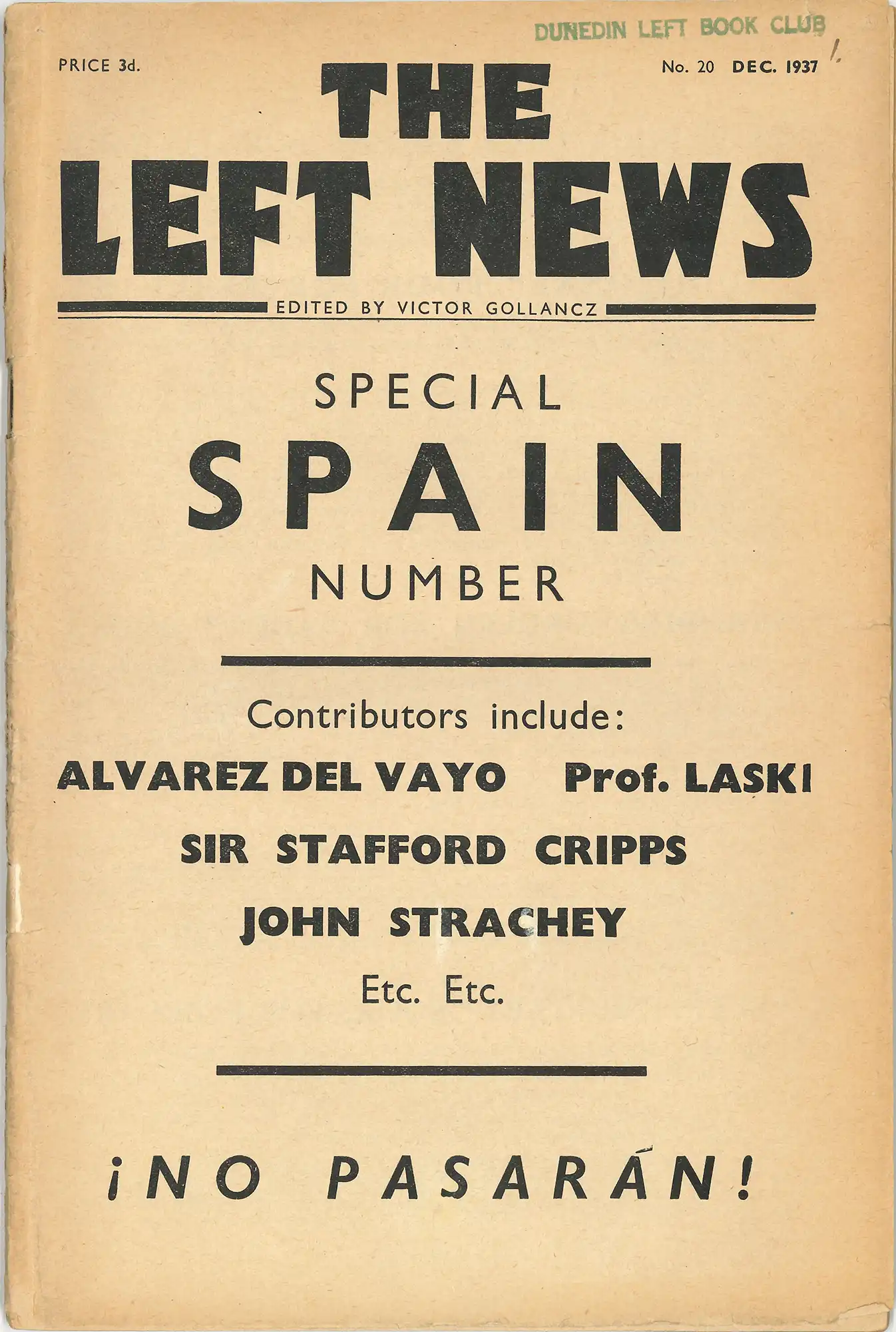
The Left News, No. 20 (December 1937)
The cause célèbre of the left, the Spanish Civil War was a major impetus for Left Book Club activity and a catalyst for membership growth. The club organised talks, film screenings and public meetings on the subject, culminating in the National Spain Conference on 23 April 1938 in the Queen’s Hall, attended by 1806 delegates, of which 262 were from LBC groups. The Club printed and distributed 8 million copies of its ‘There is Grave Danger’ leaflet in November 1938 and organised material aid for the Republicans, including sending a food ship to Barcelona in February 1939.
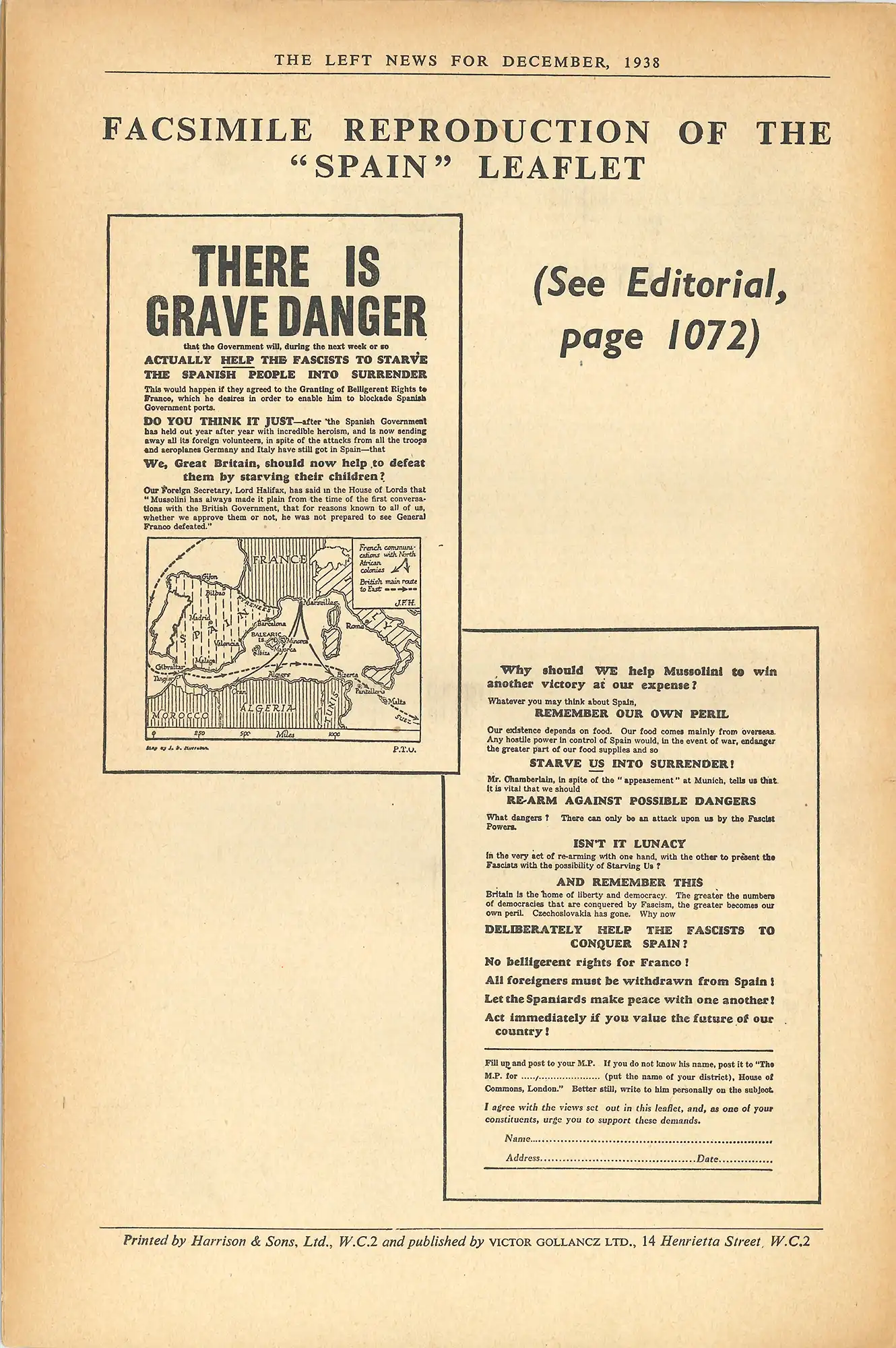
The Left News, No. 32 (December 1938)







